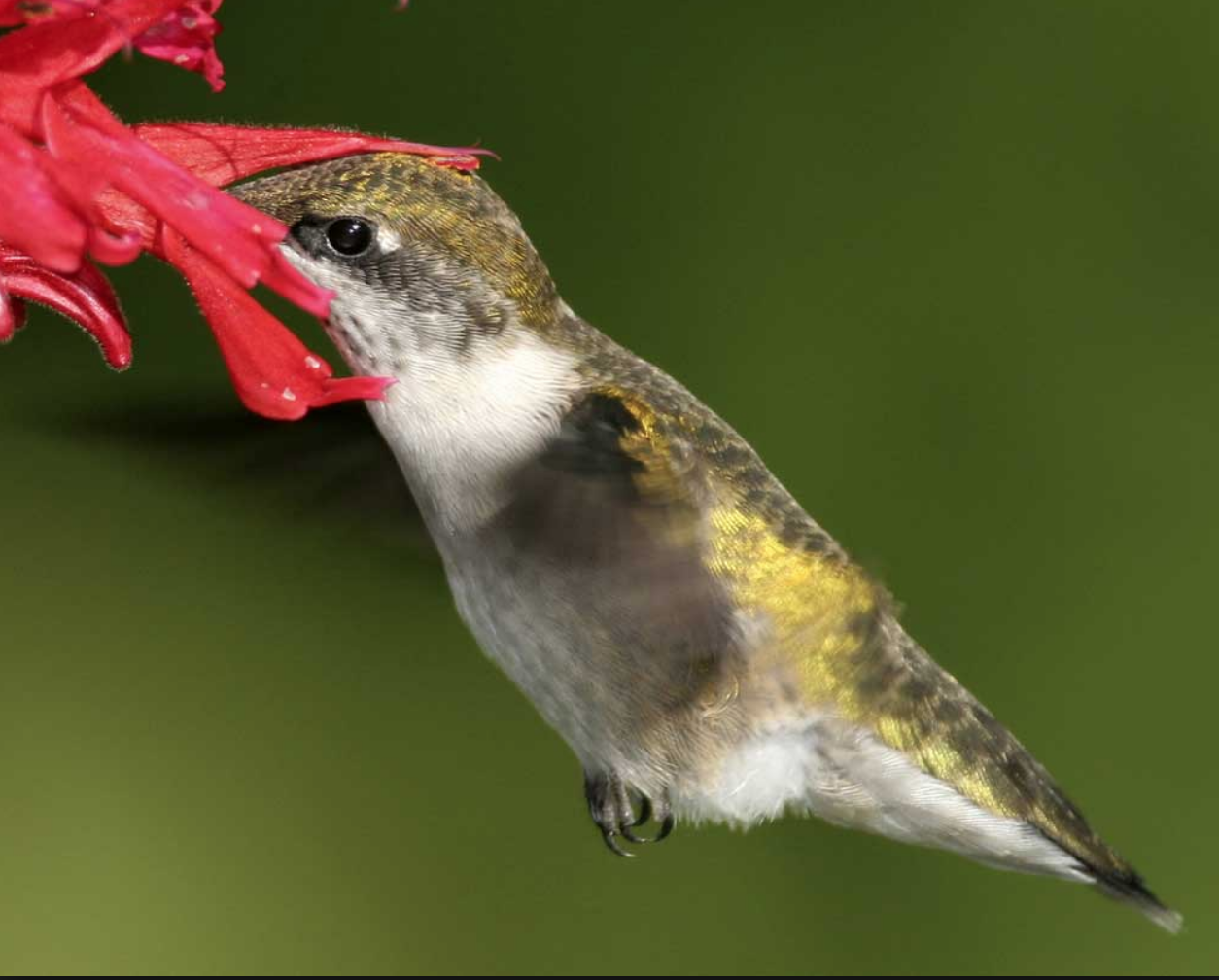Audubon's Blog: This Year’s Hummingbirds
Contributed by Bill Hamilton
Starting in the summer of 2012, my wife Deborah and I became committed to hummingbirds. We had the pleasure of watching a female Ruby-throated Hummingbird (whom we named “Hubert”) swoop into our yard in late May and take over all of our flower beds. We put up a nectar feeder for her and watched her battle other Ruby-throated Hummingbirds for possession of the feeding resources.
Hubert’s daily adventures brought to mind television shows like “Meerkat Manor” in terms of anthropomorphized animal drama. She was, indeed, a soap opera queen! Finally, Hubert nurtured her mirror-imaged fledgling into robust independence and then flew off in late September on her migration to the south.
In the summer of 2013, we had another female Ruby-throated Hummingbird that behaved much like Hubert (she perched at the same spot on the long, utility line out by the street, and kept watch on her flower bed and nectar feeder domain). Based on the scientific literature that documents the species' preferential return to both their summer and winter locations, we assumed that this active hummingbird was Hubert, and we enjoyed her encore, summer performance which also generated another fledgling.
In 2014 and 2015, we had no hummingbirds in our yard. Possibly it was too cool or too wet for them, possibly the destruction of our beebalm patch (the centerpiece of our hummingbird flower garden!) by deer left insufficient natural nectar sources to attract them, or maybe there was a lingering aura of the ferocious territorial defenses that Hubert mounted against any intruder that kept passing hummingbirds from dropping into our yard.
We replanted the beebalm in our deer-controlled side yard. The wooden fence and the high line of flapping, plastic pennants has worked for three years now to keep the deer from our deck-side flower bed and small vegetable garden. The beebalm grew tall and thick and was brilliantly flowering in mid-June 2016, and, sure enough, we got not just one but three hummingbirds (two females and a male). Neither of these females, though, behaved like Hubert!
Deborah hung her nectar feeder next to the beebalm and our active trio stuck around for the rest of the summer (joined eventually by another female-plumed individual whom we assumed to be a fledge of one of the females).
We had a similar experience this year. The beebalm was lush and thick with flowers and at first one female and one male ruby-throat battled each other for access to the nectar and then a second female (this year’s fledge?) started using the feeder
Toward the end of August, the male vanished from our yard. We assumed that he left on his long and arduous migration south. The two females (as of today, August 25) are still coming into the feeder and perching on the maple and spruce branches that surround that side of the yard. I am sure that we only have another few weeks before they take off on their long journey south, too.
Migration is an absolute requirement for most hummingbirds. They are not able to eat seeds or fruit or other food that might persist through a cold, temperate zone winter. They are nectar fueled carnivores that must have abundant sources of flowers and insects throughout the year.
The Ruby-throated Hummingbirds that summer around here spend their winters in the dry forests, citrus plantations, and scrub forests of southern Mexico, Guatemala, Honduras, Nicaragua, Costa Rica, and northern Panama, and rely on patches of nectar-rich flowers and abundant insects at multiple locations along their migration routes. Maintenance of their overwintering habitats and their chain of migration “re-fueling” stations are major factors in the conservation of these birds.
